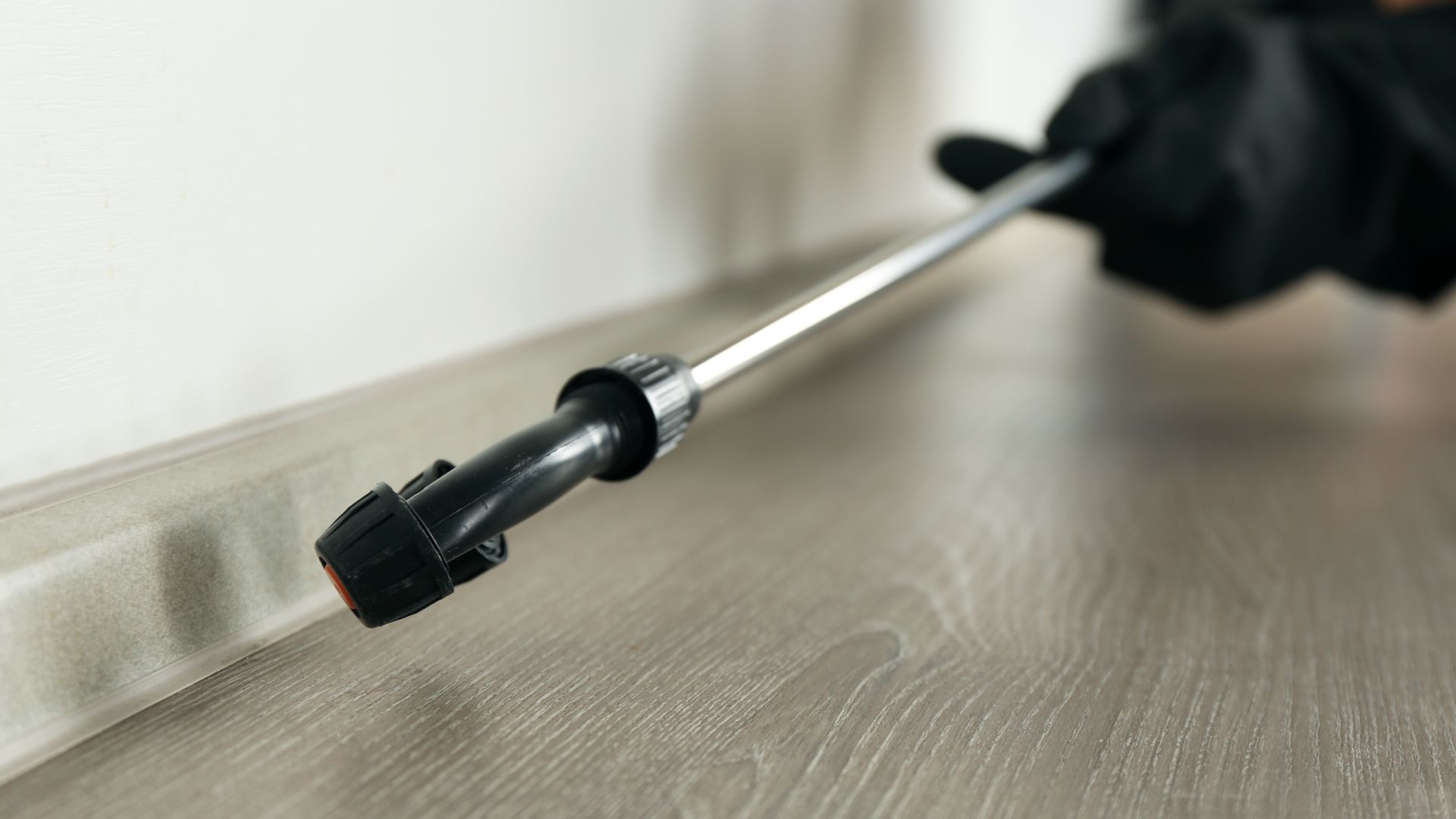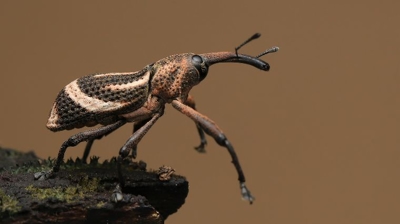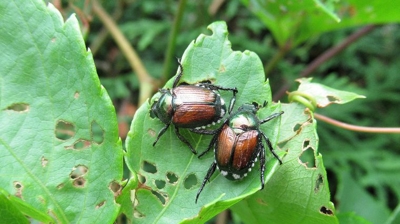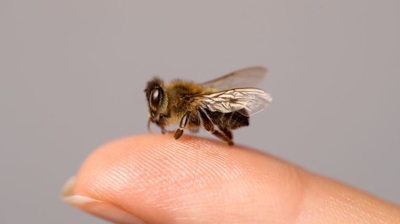
Wood Roaches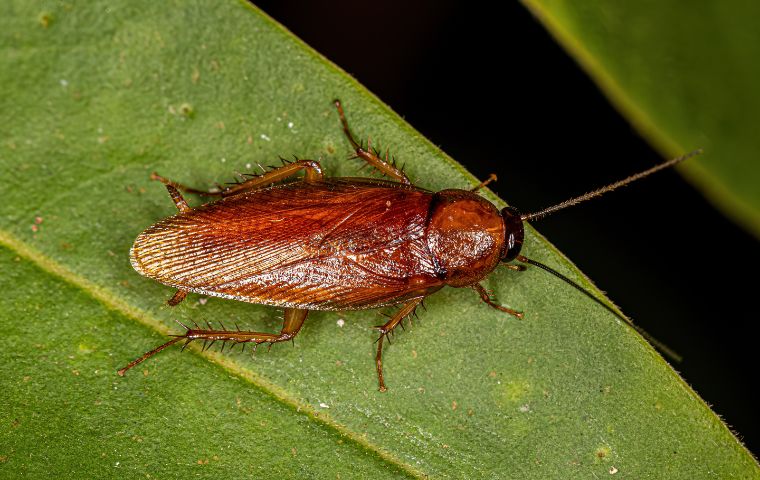
What Are Woods Cockroaches?
Wood roaches, also known as wood cockroaches or outdoor roaches, are a group of cockroach species that primarily live outdoors and are not typically considered pests like their indoor counterparts. These roaches belong to the Ectobiidae family and are distinct from common household roaches such as the German cockroach or American cockroach.
Wood roaches are characterized by their reddish-brown to dark brown coloration and are often smaller in size compared to indoor roaches. They are generally more elongated and have long, spindly legs. These roaches prefer to inhabit natural environments, such as wooded areas, leaf litter, and decaying organic matter, and they are not well-adapted to living indoors.
Unlike household roaches, wood roaches do not infest homes, do not reproduce indoors, and do not pose the same health and hygiene risks. They primarily feed on decaying wood, plant matter, and fungi, contributing to the decomposition of organic material in their natural habitat.
In the rare instances where wood roaches enter homes, it is usually accidental, and they do not establish themselves as pests. They are attracted to light and can be found near windows or light sources at night. If found indoors, they can typically be removed easily without the need for extensive pest control measures.
It's important to distinguish between wood roaches and common indoor cockroaches, as the control and prevention strategies for each group are quite different. Wood roaches play a beneficial role in their natural ecosystems by aiding in the decomposition What Do Wood Roaches Look Like?
What Do Woods Roaches Look Like?
Wood roaches, also known as wood cockroaches or outdoor roaches, have distinctive characteristics that set them apart from indoor cockroach species. Here is a description of what wood roaches typically look like:
- Size: Wood roaches are generally smaller in size compared to indoor roaches, with adults typically ranging from 0.5 to 1 inch (1.3 to 2.5 cm) in length.
- Color: They are typically reddish-brown to dark brown in color, and their bodies may have a glossy appearance. Some wood roach species may exhibit variations in color, but they usually have a similar range of earthy tones.
- Body Shape: Wood roaches have elongated, slender bodies with long, spindly legs. Their bodies are flat and well-suited for maneuvering in outdoor environments.
- Antennae: They have long, slender antennae that can be as long as or longer than their bodies. These antennae are used for sensory purposes, helping them navigate and locate food and mates in their natural habitat.
- Wings: Many wood roach species have wings but are not strong fliers. Their wings typically extend beyond their bodies, but they do not fly as efficiently as some indoor roaches.
- Pronotum: The pronotum, which is the plate-like structure that covers the upper part of the thorax, is often more pronounced in wood roaches. It can be an identifying feature, with various species having distinct patterns or markings on it.
- Habitat: Wood roaches are primarily found outdoors in natural environments. They prefer wooded areas, leaf litter, and decaying organic matter, which is where they feed and reproduce.
- Behavior: Unlike indoor roaches, wood roaches are not adapted to living indoors. They do not infest homes, and any indoor sightings are usually accidental. Wood roaches are attracted to light and may be found near windows or light sources at night.
Wood roaches are small to moderately sized, reddish-brown to dark brown roaches with elongated bodies, long antennae, and a preference for outdoor habitats. They are not considered pests in the same way as indoor cockroaches and are generally harmless when encountered indoors.
Where Are Wood Roaches Found?
Wood roaches, also known as wood cockroaches or outdoor roaches, are typically found in outdoor and natural environments. They have adapted to live in various wooded areas and habitats where they can find decaying organic matter and moisture. Here are some common places where you might encounter wood roaches:
- Wooded Areas: Wood roaches are most commonly found in forests, wooded areas, and parks. They inhabit the leaf litter, under bark, and in rotting logs or stumps.
- Gardens and Landscapes: They can also be present in garden areas, especially in mulch, compost piles, and other organic matter-rich environments.
- Firewood Piles: Wood roaches are known to hide in and around stacks of firewood, as it provides them with shelter and a source of decaying wood.
- Leaf Litter: In the fall and winter months, wood roaches often seek shelter in leaf litter on the forest floor. They may burrow into the leaves to protect themselves from the cold.
- Compost Bins: If you have a compost bin in your backyard, it's not uncommon to find wood roaches among the decaying plant material.
- Rocky Areas: Some species of wood roaches are adapted to rocky environments, where they hide in crevices and under rocks.
- Under Tree Bark: Wood roaches may seek shelter under the bark of trees, where they feed on decaying plant material and fungi.
- Moist Environments: They are more likely to be active in areas with sufficient moisture, as they require water for survival. This could include areas near streams, ponds, or damp soil.
- Outdoor Lights: Wood roaches are attracted to artificial lights at night. You may occasionally find them near outdoor light fixtures or windows if they are drawn to the light source.
Wood roaches are not considered household pests and are generally harmless. They play a role in ecosystems by aiding in the decomposition of organic matter. If you encounter wood roaches indoors, it's usually because they were attracted by light sources and can typically be removed easily without the need for extensive pest control measures.
What Is The Life Cycle Of Wood Roaches?
The life cycle of wood roaches, like many other cockroach species, consists of several stages, including egg, nymph, and adult. However, wood roaches have some specific characteristics and behaviors that differentiate them from household roaches. Here is an overview of the life cycle of wood roaches:
Egg Stage:
The life cycle begins when a female wood roach deposits her eggs in a sheltered location, often within decaying wood, leaf litter, or other organic material in their outdoor habitat. Wood roach eggs are encased in protective capsules called oothecae, which are usually carried by the female until they are ready to hatch. Each ootheca can contain multiple eggs. The time it takes for wood roach eggs to hatch can vary depending on environmental conditions and species, but it typically ranges from a few weeks to a few months.
Nymph Stage:
After hatching from the ootheca, wood roaches emerge as nymphs. Nymphs are essentially miniature versions of adult roaches but lack wings. Nymphs go through a series of molts as they grow, shedding their exoskeleton to accommodate their increasing size. The nymph stage typically lasts for several months, and the number of molts can vary by species.
Adult Stage:
When wood roaches reach maturity, they become winged adults. The time it takes to reach adulthood can vary based on species and environmental conditions. Adult wood roaches are responsible for reproducing and continue the cycle by laying eggs and protecting the oothecae.
Wood roaches are adapted to living in outdoor environments and do not reproduce indoors or infest homes. Unlike common household roaches, they do not reproduce prolifically and do not pose the same health and hygiene risks. Wood roaches primarily contribute to the decomposition of organic matter in their natural habitats.
The specific duration of each life cycle stage and the overall life span of wood roaches can vary among species and is influenced by factors such as temperature, humidity, and the availability of food and shelter in their natural habitat. However, the general life cycle described above is characteristic of these outdoor roaches.
What Do Wood Roaches Eat?
Wood roaches, also known as wood cockroaches or outdoor roaches, have specific dietary preferences that are closely tied to their natural habitat. They primarily feed on decaying organic matter and play a beneficial role in ecosystems by aiding in the decomposition process. Here's an overview of what wood roaches typically eat:
- Decaying Wood: Wood roaches are particularly adept at consuming and breaking down decaying wood. They feed on wood that is in various stages of decomposition, including fallen logs, rotting tree stumps, and other woody debris found in wooded areas.
- Leaf Litter: In forested environments, wood roaches often forage in leaf litter on the forest floor, where they consume fallen leaves that have begun to decompose.
- Plant Material: While wood roaches primarily consume decaying wood, they may also eat other types of plant material, such as decomposing plant matter, fungi, and algae.
- Fruits and Vegetation: Some wood roach species have been observed feeding on fruits, flowers, and fresh vegetation in their natural habitat, particularly when other food sources are limited.
- Microorganisms: Wood roaches may ingest various microorganisms that thrive in decaying organic matter, including bacteria and fungi.
Wood roaches are herbivorous and specialize in breaking down cellulose, a complex carbohydrate found in plant cell walls. They have specialized digestive systems that allow them to digest and extract nutrients from the cellulose in decaying wood and plant material.
Unlike common household roaches, wood roaches do not seek out human food sources, contaminate living spaces, or pose health and hygiene risks. They are beneficial in natural ecosystems as decomposers, helping to recycle nutrients and contribute to the breakdown of organic matter in wooded and outdoor environments.
Are Wood Roaches Dangerous?
Wood roaches, often referred to as "wood cockroaches" or "outdoor roaches," are a type of cockroach species that primarily inhabit outdoor environments. They are different from the common household cockroach species like the German cockroach, American cockroach, or Oriental cockroach. Wood roaches are generally not considered dangerous to humans, and here is why:
- Habitat and Behavior: Wood roaches typically live in forested or wooded areas. They prefer decaying wood, leaf litter, and other organic matter as their natural habitat. Unlike household cockroaches, they are not adapted to indoor living and are not commonly found within homes.
- Non-Invasive: Wood roaches are not known to infest houses or structures. They usually stay outdoors, feeding on decomposing plant material and fungi. They do not carry the same health risks associated with indoor cockroaches, which can contaminate food and spread disease.
- Diet: These roaches are primarily herbivorous, feeding on decaying wood, leaves, and plant matter. They do not scavenge for human food or come into contact with human waste, reducing the risk of transmitting pathogens to people.
- Low Health Concerns: Wood roaches are not a known vector for diseases that affect humans, unlike some other cockroach species. The main health concerns associated with cockroaches come from indoor species that can pick up pathogens in unsanitary environments.
- Lack of Aggressiveness: Wood roaches are not aggressive and do not exhibit the same behaviors as some indoor cockroaches, which may scatter when disturbed. They are generally docile and do not pose a threat to humans.
- Limited Interaction: Even in outdoor settings, wood roaches are not commonly encountered by people. They tend to be more active at night and prefer to remain hidden during the day, further reducing the chances of interaction.
While wood roaches are not considered dangerous, it's essential to remember that any interaction with wildlife, insects, or outdoor creatures should be done with care. In some cases, they may enter homes accidentally, but their presence is typically temporary and does not necessitate the same control measures as indoor cockroaches. If you find wood roaches in your home, it's advisable to safely relocate them back to their natural habitat rather than resorting to chemical pesticides, as these creatures serve a role in the ecosystem and are generally harmless to humans.
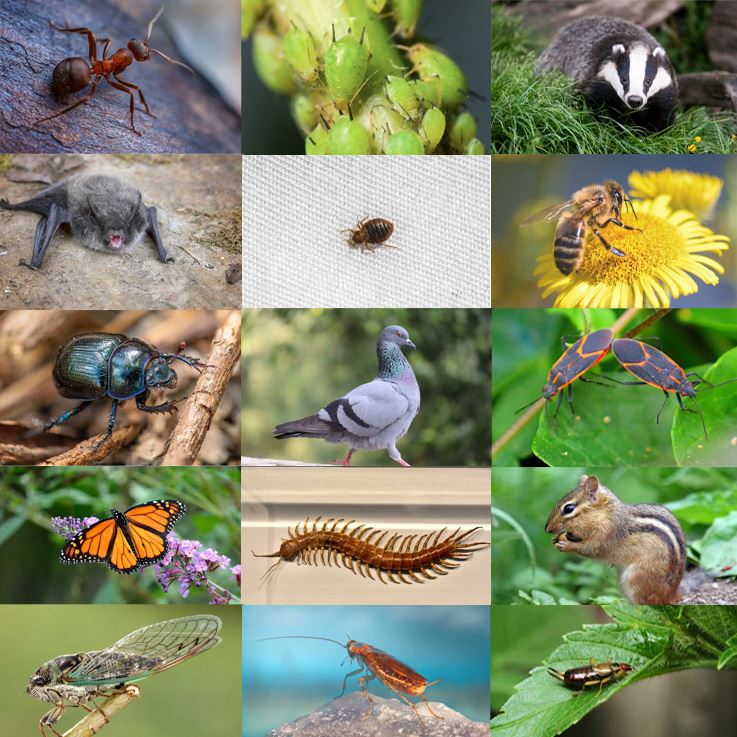
Frequently Asked Questions About Wood Roaches
Why do I have a wood roach problem?
While wood roaches are not known to establish infestations in homes like some household cockroach species, they may still enter homes in certain situations. Here are some common reasons why you might have an infestation of wood roaches:
- Attracted to Light Sources: Wood roaches are attracted to light sources, which can lead them to enter homes through open windows or doors. If you leave lights on at night, especially outside or near windows, it can increase the likelihood of wood roaches entering your home.
- Accidental Entry: Wood roaches may accidentally enter homes through cracks or openings in the walls, foundation, or roof. They may also be brought inside on firewood or other items that have been stored outside.
- Moisture Issues: Like all cockroaches, wood roaches require moisture to survive. If your home has moisture issues, such as leaks or high humidity levels, it can make your home more attractive to wood roaches.
- Outdoor Environment: If you live in an area with a high population of wood roaches, you may be more likely to have them enter your home. This can be especially true if you live near wooded areas or if your home is surrounded by plants or trees.
- Food Sources: While wood roaches do not typically establish infestations in homes, they may still be attracted to food sources inside. This can include pet food, crumbs, or other food debris left out.
To prevent an infestation of wood roaches, it is important to take steps to make your home less attractive to them. This can include sealing cracks and openings in the walls, foundation, or roof, using screens on windows and doors, and reducing sources of moisture inside and outside your home. It is also important to keep your home clean and free of food debris. If you continue to have issues with wood roaches, it may be necessary to consult with a pest control expert for further assistance.
How do I get rid of wood roaches?
If you have a wood roach infestation in your home, it is important to take steps to eliminate the insects and prevent future infestations. Here are some effective methods for getting rid of wood roaches:
- Reduce Moisture: Wood roaches require moisture to survive, so reducing sources of moisture in and around your home can make your home less attractive to these insects. This can include fixing leaky pipes, reducing humidity levels in your home, and ensuring proper drainage around your home.
- Seal Entry Points: To prevent wood roaches from entering your home, seal any cracks or openings in the walls, foundation, or roof. You can use caulk or other sealants to fill in these openings.
- Use Traps: Sticky traps can be effective for catching and eliminating wood roaches. Place these traps in areas where you have seen wood roaches, such as in the kitchen or bathroom.
- Insecticides: Insecticides can be used to eliminate wood roaches, but it is important to use them safely and properly. Follow the instructions on the label and use only in areas where wood roaches are present.
- Professional Pest Control: If you have a severe or persistent wood roach infestation, it may be necessary to consult with a professional pest control expert. They can assess the situation and recommend the best course of action for eliminating the insects and preventing future infestations.
Wood roaches are not typically known to establish infestations in homes like some household cockroach species. If you are seeing wood roaches in your home, they may be entering accidentally or through open windows or doors. Taking steps to make your home less attractive to wood roaches, such as reducing moisture and sealing entry points, can help prevent future infestations.
How can I prevent wood roaches in the future?
Preventing wood roaches from entering your home is the best way to avoid a potential infestation. Here are some steps you can take to prevent wood roaches in the future:
- Reduce Moisture: Wood roaches require moisture to survive, so reducing sources of moisture in and around your home can make your home less attractive to these insects. Fix any leaky pipes, reduce humidity levels in your home, and ensure proper drainage around your home.
- Keep Your Home Clean: Cleanliness can go a long way in preventing wood roaches from entering your home. Be sure to clean up food and drink spills immediately, and regularly clean your kitchen and bathroom to remove any crumbs or debris that may attract wood roaches.
- Seal Entry Points: Sealing cracks or openings in the walls, foundation, and roof of your home can prevent wood roaches from entering. Use caulk or other sealants to fill in these openings.
- Remove Wood Piles: Wood roaches are attracted to wood piles, so it is important to remove any piles of firewood or other wood debris from around your home. If you do have a wood pile, keep it at least 20 feet away from your home and elevate it off the ground.
- Use Screens: Installing screens on doors and windows can prevent wood roaches from entering your home. Be sure to repair or replace any damaged screens.
- Use Outdoor Lighting Carefully: Wood roaches are attracted to light, so using outdoor lighting carefully can help prevent them from entering your home. Use yellow or amber lights, which are less attractive to insects, and avoid leaving lights on unnecessarily.
By taking these steps, you can greatly reduce the chances of a wood roach infestation in your home. If you do suspect a wood roach infestation, it is important to consult with a pest control expert for further assistance.

Hear From Our Happy Customers
-
"Great Communication"
Tech was on time, communication was great, and he accommodated my needs.
- Alonzo W. -
"Very Knowledgeable"
The tech that arrived was courteous, professional, and very knowledgeable. He was Great.
- Uerial I. -
"Wonderful Service"
Wonderful service. Jarvis is great. Took care of everything I needed. Thank you!
- Henry P. -
"Professional & Considerate"
I’m pleased with Miche services. Jarvis came today. Professional and considerate. Thank you!
- Judy B. -
"Exceeds Expectations"
I can’t say enough positive things about this company... The tech that came out, Jarvis went above and beyond my expectations. Thank you guys, I will continue using your services.
- Jake M. -
"Fantastic & Patient"
Jarvis was fantastic and patient. He answered my questions with an in-depth explanation and addressed all of my areas of concern. Would love for him to be my assigned tech going forward. Well done!
- Yonnette M.
